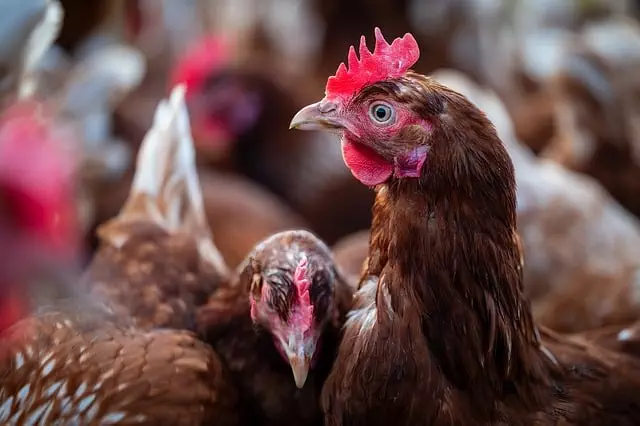Yard waste removal and recycling through composting is a sustainable gardening practice that transforms organic materials like leaves, grass clippings, and kitchen scraps into valuable soil amendment. This process enriches garden soil with essential nutrients, improves its structure, and enhances its biodiversity while simultaneously reducing waste in landfills and mitigating greenhouse gas emissions. Effective composting involves a mix of 'greens' (high in nitrogen) and 'browns' (rich in carbon), regular turning to optimize aeration and decomposition, and maintaining the right moisture levels to support microbial activity. By adhering to these composting principles, gardeners can contribute to a healthier ecosystem and more sustainable gardening practices, all while diverting yard waste from landfills. This not only benefits your own garden's productivity but also supports environmental stewardship by promoting a cycle of reuse and reduction in waste.
Embark on a greener path with yard waste removal and composting, transforming your garden’s discards into vital, nutrient-rich soil. This article guides you through the art of compost creation, detailing how to maximize your garden’s fertility and contribute to sustainable practices. Dive into the composting process, learn which materials are best for a diverse and dynamic compost pile, and discover essential equipment for efficient yard waste recycling. With our practical tips, maintain a balanced and vibrant compost year-round, enhancing your garden’s ecosystem while reducing waste. Join us to unlock the secrets of effective composting for enthusiastic gardeners.
- Maximizing Your Garden's Fertility with Yard Waste Removal and Compost Creation
- Understanding the Composting Process: From Collection to Decomposition
- Essential Equipment for Efficient Yard Waste Recycling and Composting
- Diverse Materials for Nutrient-Rich Compost: What to Include from Your Yard
- Tips for Maintaining a Balanced and Vibrant Compost Pile Year-Round
Maximizing Your Garden's Fertility with Yard Waste Removal and Compost Creation

Yard waste removal and recycling play a pivotal role in maintaining the health and fertility of your garden. Instead of sending organic materials like leaves, grass clippings, and garden trimmings to landfills, consider repurposing them into nutrient-rich compost. This not only reduces environmental impact but also enriches your soil with valuable organic matter. By composting, you create a closed-loop system that benefits both the environment and your plants. The decomposition process of yard waste releases heat and breaks down complex organic molecules into simpler ones that plants can easily absorb. Compost also improves soil structure, enhances water retention, and introduces beneficial microorganisms that suppress plant diseases and improve soil biodiversity.
To begin composting, start by selecting a convenient spot in your garden for the compost pile or bin. Ensure it’s easily accessible for regular additions of yard waste and kitchen scraps. A mix of ‘greens’ (nitrogen-rich materials like grass clippings and kitchen scraps) and ‘browns’ (carbon-rich materials such as dried leaves, straw, and twigs) is essential for a balanced compost. Regularly turning the pile or adding it to a bin can accelerate the decomposition process and prevent the development of odors or pests. Yard waste removal and recycling through composting not only contributes to your garden’s vitality but also aligns with sustainable practices that reduce greenhouse gas emissions and foster a healthier ecosystem. Engaging in this natural cycle of decomposition and renewal is both a rewarding and essential activity for any garden enthusiast committed to enhancing their garden’s fertility and environmental stewardship.
Understanding the Composting Process: From Collection to Decomposition

Garden enthusiasts who wish to engage in compost creation can significantly benefit from understanding the composting process, which is a sustainable approach to yard waste removal and recycling. The journey begins with the collection of suitable organic materials such as fruit and vegetable scraps, grass clippings, leaves, and twigs. These materials are rich in nutrients and serve as the primary ingredients for compost. To initiate decomposition, it’s crucial to balance these greens (nitrogen-rich) with carbon-rich browns like dried leaves, straw, or shredded paper. This balance promotes aerobic decomposition, which is favored over anaerobic processes due to its efficiency and odor control.
The composting process unfolds as microorganisms, including bacteria and fungi, break down the organic matter. These decomposers thrive in a moist, aerated environment and are responsible for transforming kitchen scraps and yard waste into nutrient-dense humus. As the compost matures, it undergoes various stages from an active decomposition phase where heat is generated to a curing phase where the material stabilizes. Monitoring moisture levels, turning the pile regularly to ensure oxygen flow, and adjusting the carbon to nitrogen ratio are key practices in maintaining an optimal environment for these microorganisms. Yard waste removal and recycling through composting not only reduces landfill use but also returns valuable nutrients to the soil, thereby supporting a healthy garden ecosystem and promoting sustainable gardening practices.
Essential Equipment for Efficient Yard Waste Recycling and Composting

Yard waste removal and recycling are integral practices for garden enthusiasts looking to maintain a sustainable garden ecosystem. Efficient composting begins with the right equipment, which not only facilitates the decomposition process but also ensures that organic matter is converted into nutrient-rich compost effectively. A key piece of essential equipment for this endeavor is a compost bin or pile, which can be as simple as a corner in your yard or as elaborate as a commercial composting system. The bin should be sized appropriately for your needs and designed to allow adequate airflow, which is crucial for aerobic decomposition. A carbon-rich browns layer, such as dried leaves, straw, or shredded paper, should be balanced with a nitrogen-rich greens layer, including kitchen scraps and grass clippings.
In addition to the compost bin, garden enthusiasts will benefit from using tools like a spade, pitchfork, and compost thermometer for turning the compost, which introduces oxygen and helps maintain optimal temperatures for decomposition. A shredder or chipper can also be invaluable for breaking down larger plant materials into smaller pieces that decompose more quickly. Moreover, a soil test kit will help monitor the nutrient levels of your compost, ensuring it’s ready for use when needed. Regularly monitoring moisture and aeration levels with the compost thermometer and turning the pile every week or two with the pitchfork will further enhance the efficiency of your yard waste removal and recycling efforts. By adhering to these guidelines and utilizing the right equipment, you can create a thriving compost system that contributes to the health of your garden and promotes a sustainable environment.
Diverse Materials for Nutrient-Rich Compost: What to Include from Your Yard

Garden enthusiasts looking to enhance their soil naturally can start by understanding what materials are ideal for compost creation, which ties into yard waste removal and recycling efforts. A nutrient-rich compost is a gardener’s best ally, providing essential elements that support plant growth. To begin composting effectively, it’s important to include a diverse range of organic matter. Green waste such as grass clippings and weeds can be mixed with brown materials like dried leaves, straw, and shredded paper. These materials, often categorized under yard waste removal, break down at different rates, creating a balanced compost. Adding kitchen scraps like fruit peels and coffee grounds further enriches the compost with nitrogen, while eggshells contribute calcium. By layering these materials and ensuring an even mix of greens and browns, gardeners can avoid problems like compaction or excessive moisture. Regular turning of the compost pile accelerates the decomposition process and ensures oxygen circulation, which is crucial for aerobic decomposition. Yard waste recycling in this manner not only reduces the amount of waste sent to landfills but also creates a valuable resource that can be used to improve soil structure and fertility, leading to healthier plants and a more sustainable garden practice.
Tips for Maintaining a Balanced and Vibrant Compost Pile Year-Round

Engaging in yard waste removal and recycling through composting is a rewarding practice for garden enthusiasts, promoting soil health and reducing landfill waste. To maintain a balanced and vibrant compost pile year-round, it’s crucial to monitor the moisture levels, ensuring the compost is as damp as a wrung-out sponge. This balance supports the decomposition process by keeping microorganisms active and preventing the pile from drying out or becoming waterlogged. Aerating the compost regularly allows oxygen to circulate, which is necessary for the survival of these decomposers. Additionally, balancing carbon-rich ‘browns’ like dried leaves and nitrogen-rich ‘greens’ such as kitchen scraps will provide the optimal carbon to nitrogen ratio, typically around 30:1. This ratio supports efficient decomposition and heat generation within the compost pile, indicative of a healthy composting process.
Seasonal variations require adaptable strategies; for instance, during colder months, insulating the compost pile can protect it from freezing temperatures. Conversely, in warmer seasons, ensuring adequate shading can prevent overheating and the decomposition process slowing down. Regularly turning the compost not only accelerates the breakdown of materials but also helps in redistributing moisture and oxygen evenly. By understanding and implementing these practices for yard waste removal and recycling through composting, garden enthusiasts can maintain a robust and productive compost system throughout the year, yielding nutrient-rich compost that enriches their gardens and reduces environmental impact.
Garden enthusiasts looking to enrich their soil naturally can harness the power of yard waste through effective composting. By understanding the composting process and equipping oneself with the necessary tools, one can transform organic matter into a nutrient-dense compost, contributing to the health and vitality of the garden. Diverse materials from your own yard play a key role in creating a balanced and vibrant compost pile that can be sustained year-round. Embracing Yard Waste Removal and Recycling not only promotes sustainable practices but also yields rich, organic fertilizer for your plants. With these strategies in hand, your garden will thank you with bountiful harvests and flourishing landscapes.


